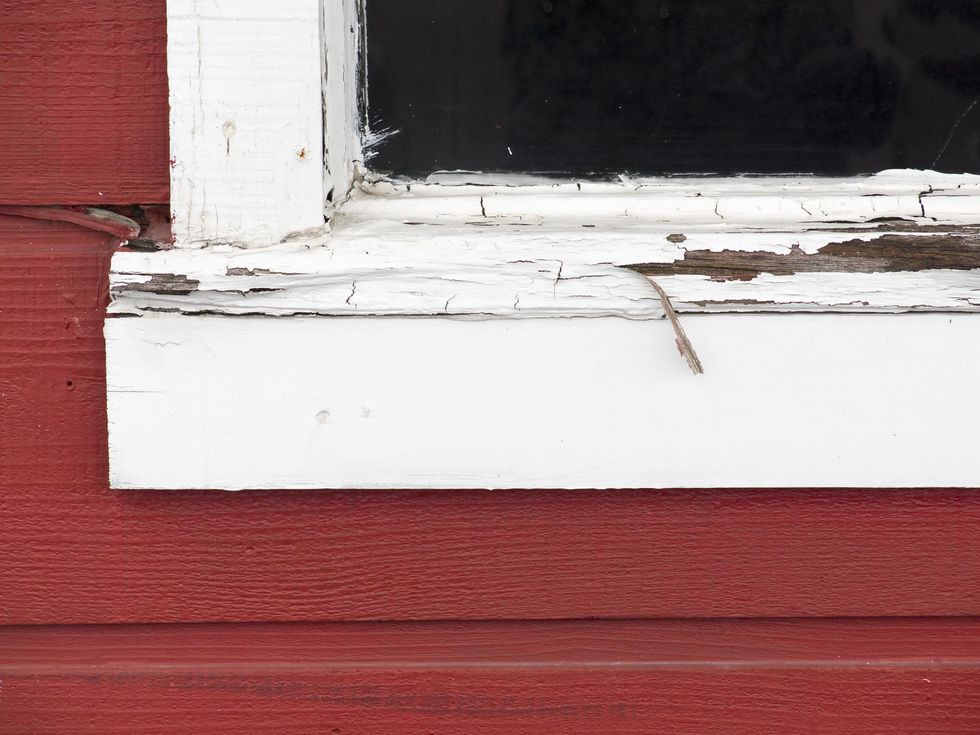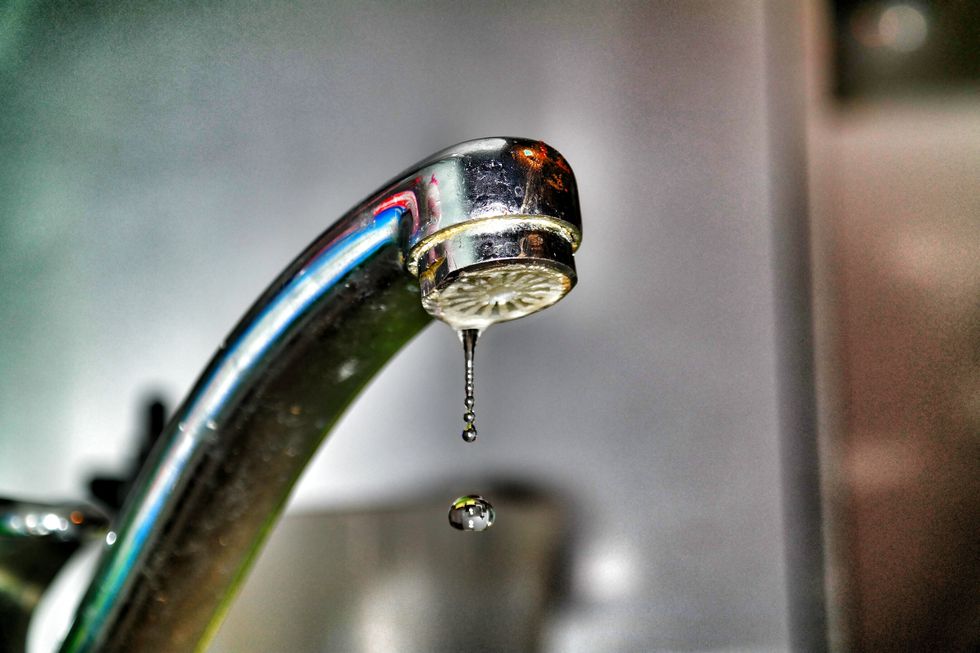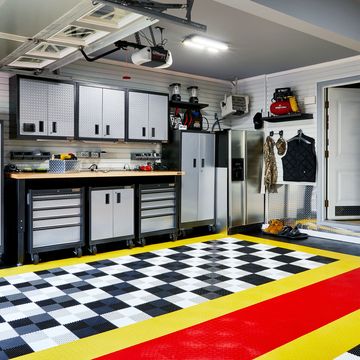Hate to break it to you, but ignoring that ugly water spot on the ceiling is the wrong move. Lingering issues around the house can get worse—much worse—if you don't address them ASAP. Here's how to identify and fix seemingly small problems before they morph into expensive repairs.
1. The basement is damp. A musty basement can lead to mold and mildew. Plus, it stinks. Many times, grading the yard encourages the water to run away from the house, rather than leaking into the basement. Installing gutters and downspout extensions channels rain water away from the foundation, which can help keep the basement dry. The worst case scenario is you'll need to place drain tile around the footings. This job typically requires a pro and costs several thousand dollars.
2. Your deck is rotting. Wooden decks are vulnerable to rot and deterioration. (Especially if they don't receive much sunlight.) Sometimes, a few boards or one section will rot. Other times, the rotting is pervasive. This can make the structure unsafe and cause the rails to loosen.
You'll need to replace all rotting boards. For any rip and repair work, use a reciprocating saw—like the Ridgid X4 18-Volt Cordless model, which easily earns DIY points for its portability. Cut the boards back to the nearest joist. On older decks, it's a good idea to replace all the boards so they're solid and sturdy, and it gives the structure a fresh, consistent look. Consider composite decking as a replacement. It's more expensive than wood, but it won't rot. If you have tree branches covering the deck and blocking out the sun, trim some back to let light shine through and help keep the deck dry.
3. The gutters are clogged. Leaves, twigs, and nuts pile up. During storms, this causes water to spill over the top, which can freeze on the sidewalk and driveway, posing a slipping hazard. Another scenario: Because the water isn't going to the downspouts and flowing away from the house, it can leak into the basement. Simply cleaning the gutters once or twice a year keeps the water moving. Consider installing gutter guards, which start at $1.30 per 3-ft. section, to keep them debris-free.
4. Water spots are showing up on the wall or ceiling. This is urgent—it means you have a leaky pipe inside the wall or ceiling, or water is coming in from the outside. If the water spot is constantly present, it's probably a plumbing issue. If it shows up after a rain, the cause is likely a leaky roof, siding, or window. Left unfixed, the water spot will expand, affecting a larger area that'll need to be replaced or repainted, and could encourage mold.
The toughest part of the fix is tracking down the source of the leak. Water travels, making it tricky to pinpoint its origin. Start by cutting a hole in the plaster or drywall at the water spot. If piping is present, look for and repair the leak. If plumbing isn't the cause, you'll need to do some detective work. The usual suspects include the deck ledger board, windows, or vents or pipes sticking through the roof or siding where the caulk has cracked and peeled away.
5. Termites are present. This is serious. Don't procrastinate. Termites can do a lot of damage, (including structural) in a short amount of time. This fix requires an exterminator.
6. Caulk is peeling away. Inside, caulk can come loose away around bathtubs, sinks, or backsplashes. Outside, it happens around doors, windows, deck ledger boards, or protrusions in the walls or roof, like a vent from your range. Besides looking ugly, cracking or peeling caulk can allow water to infiltrate, leading to rot and mold.
The repair is inexpensive, doesn't require any special skills, and only takes an hour or so from start to finish. First, use a utility knife and a putty knife to cut and scrape away the old caulk. Then use a brush or a towel with mineral spirits to clean the area of debris. Finally, run a new bead of caulk.
7. A faucet is leaky. If you turn off the faucet but the water keeps dripping, pushing harder on the handle won't solve the problem. Putting off the fix wastes water and causes annoying drips. Plus, you can spring a deeper leak by delaying the repair.
The fix requires taking apart the faucet and replacing the washers and O-rings. Replacement kits are available at home centers starting at just a few bucks. You'll need to know your faucet brand so you buy the correct kit. Click here for step-by-step instructions for the fix.
8. The toilet keeps running. This wastes a lot of water and can be irritatingly loud. Sometimes, juggling the handle will solve an isolated incident. Often, you need to make a surprisingly easy repair: Replace the flapper and fill valve inside the tank. Home centers sell these in kits, starting at $11. See the steps to fix a running toilet here.
















